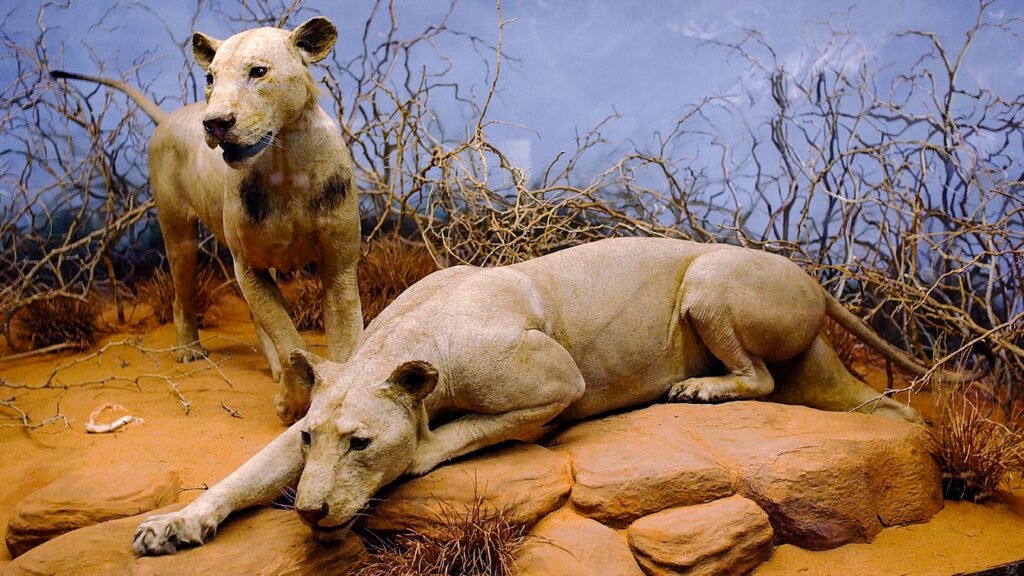A pair of male lions known as the “man-eaters of Tsavo” that terrorized Kenya over a century ago by hunting and eating people working on a railroad have revealed an unexpected and diverse menu based on a novel DNA analysis of hairs found in their tooth cavities. The lions, whose remains are preserved in the Field Museum of Natural History in Chicago, were found to have consumed oryx, zebras, wildebeest, giraffes, and even humans. The discovery of wildebeest DNA was surprising because they were not thought to be present in the Tsavo region at the time the lions lived, raising questions about how predator and prey interactions occurred in that area.
Anthropological geneticist Ripan Malhi believes that this new method of DNA analysis can provide insights into the diets of animals from past eras and aid in reconstructing diets from thousands of years ago. The degraded hairs found in the lions’ teeth were analyzed for their DNA content to identify the variety of prey species consumed by the lions during their lifetime. This unique approach allowed researchers to gain insights into the lions’ dietary habits without having prior knowledge of the animals the hairs originated from.
The research team successfully extracted and transcribed DNA from the mitochondria of hairs found in the lions’ teeth, comparing the genetic blueprints to a database of African animal species’ mitochondrial DNA. They identified a range of prey species, such as giraffe, oryx, waterbuck, zebra, and wildebeest, with the surprising presence of wildebeest DNA suggesting either long-distance travel by the lions or the presence of wildebeest in the Tsavo region during that time. The analysis even revealed that the hairs were from two distinct giraffes based on their mitogenomes.
Paleogenomicist Tyler James Murchie expressed surprise at the longevity of the DNA fragments in the lions’ mouths and the surprising diversity of their diet. The discovery of human DNA in the lions’ teeth further supports their reputation as man-eaters. The researchers aim to further study the hair deposits to understand changes in the lions’ diet over their lifespan and how dental injuries may have impacted their predation behavior. By comparing DNA from different layers of hair clumps, researchers hope to gain insights into how human-lion conflicts have affected the diet and behavior of predators.
The study showcases the potential of hidden genetic information in museum artifacts to answer intriguing questions about the past. The researchers’ innovative approach sheds light on the complex interactions between predators and prey, offering a new perspective on the lives of long-dead animals and the ecosystems they inhabited. This method of reconstructing predators’ diets using ancient hair samples lays the foundation for future research into past animal behaviors and ecological dynamics, providing a fascinating glimpse into the mysteries of the natural world.












